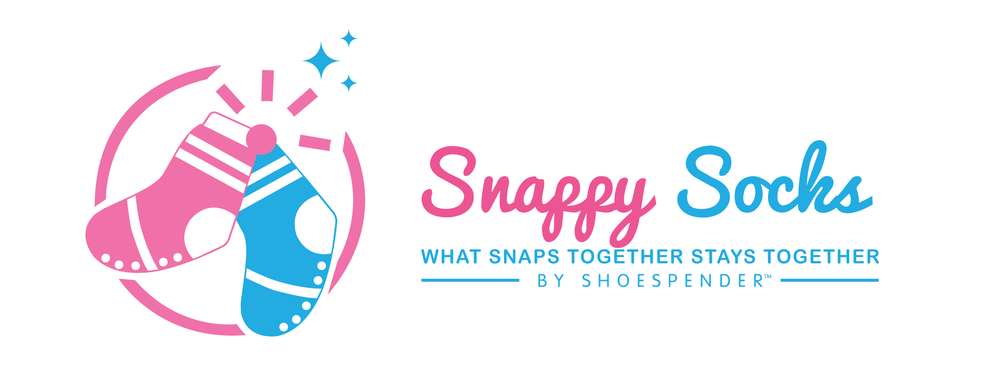Ensuring your baby's safety and comfort is a top priority, especially when they're on the move. Footwear plays a critical role, from those first wobbly steps to the carefree explorations that follow. But in the world of baby socks, parents are often presented with a choice. Should they opt for regular baby socks or invest in non-slip varieties? Understanding the benefits and drawbacks of each option is vital for making the best decision for your child's needs. This post will guide you through the considerations, from functionality to style, so you can confidently outfit your child from the toes up.
Safety First: The Importance of Grip
When your baby starts to crawl or cruise, maintaining traction is crucial. Regular socks can lead to slips and falls on smooth surfaces, which is not only a safety hazard but can also shake your child's confidence during these early attempts at mobility. Non-slip socks, designed with rubberized grips on the soles, provide the extra stability needed to prevent accidental tumbles on hard floors and play areas. These tiny treads act like miniature anti-slip devices, giving your little one a firm foundation to practice their newfound skills without the fear of sliding out from under them.
Comfort and Movement
The comfort of your baby's tiny toes is another key consideration. While regular socks may be softer and more breathable, the additional stability and traction offered by non-slip socks do not compromise on comfort. Baby feet are constantly growing and developing, so finding a balance between unrestricted movement and necessary gripping support is crucial. Non-slip socks often have a light elastic stretch that allows for some movement while staying put on their feet, unlike regular socks, which can easily slide off or twist around.
Durability and Ongoing Use
In terms of longevity, non-slip socks may have a slight edge. The rubberized patterns tend to be more resilient to the wear and tear that comes with active baby lifestyles. They can maintain their grip for longer, providing more value over time. Conversely, traditional baby socks can become slippery themselves with a few washes, especially if they start to lose their shape or elasticity. This means you may need to replace them more frequently, which can add up in terms of ongoing costs and environmental impact.
Style and Aesthetic Appeal
While the safety and comfort features of non-slip socks are undeniable, some parents may be reluctant to choose them over regular baby socks because of aesthetics. Non-slip socks are often bulkier due to the rubberized material, which might not pair as well with certain outfits or tiny shoes. Regular baby socks come in a wider variety of styles, colors, and designs, allowing you to express your little one's personality or coordinate with their clothing. However, with the rising popularity of non-slip socks, the market is seeing more fashionable options, so you don't have to sacrifice style for functionality.
Public Opinion and Real-World Use
The decision between non-slip and regular baby socks often comes down to the real-world experiences of parents. Many who have opted for non-slip varieties report a noticeable decrease in the number of accidents at home. In contrast, parents of children who wear regular socks express the need for more vigilance, especially on slippery surfaces. Consideration of public opinion, through online reviews and parenting forums, can provide valuable insights into others' experiences with each type of sock, helping you make a more informed decision based on shared anecdotes and practical advice.
Budgeting for Baby Sock Essentials
Your financial situation may influence your choice of baby socks. Non-slip varieties generally have a slightly higher price point due to the additional materials and manufacturing process involved. While the initial cost might be a deterrent, the investment in your baby’s safety can be well worth it. Regular baby socks are more affordable and can be a good choice for times when your baby doesn't need the extra grip, such as during sleep. Ultimately, finding a balance between cost and the benefits each type provides is key, and it might involve having both non-slip and regular socks in your baby's wardrobe.
The Eco-Friendly Factor
Sustainability is becoming an increasingly important consideration for many families. When comparing the environmental impact of non-slip and regular baby socks, there are factors to weigh. Regular socks, especially those made from natural materials like cotton, are biodegradable and more planet-friendly at the end of their life cycle. However, the need for more frequent replacements due to slippage or wear could result in greater overall waste. Non-slip socks often require specific handling, as the rubberized soles may not be recyclable. Choosing well-made, durable options in either category will help minimize disposable fashion and support the sustainability of your baby's wardrobe.
In Summary: The Best Foot Forward for Your Baby
The decision between non-slip and regular baby socks is not one-size-fits-all. Each type has its advantages, and the best choice depends on your baby's developmental stage, your parenting style, budget, style preferences, and the environment in which they’ll be worn. You may find that a combination of both types suits your needs — non-slip socks for playtime and exploration and regular socks for snuggly downtime. By considering the safety, comfort, durability, style, real-world experiences, budgeting, and sustainability factors, you can feel confident that your baby is taking the safest, surest steps possible.
